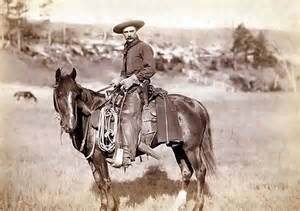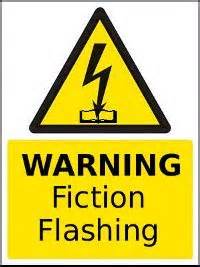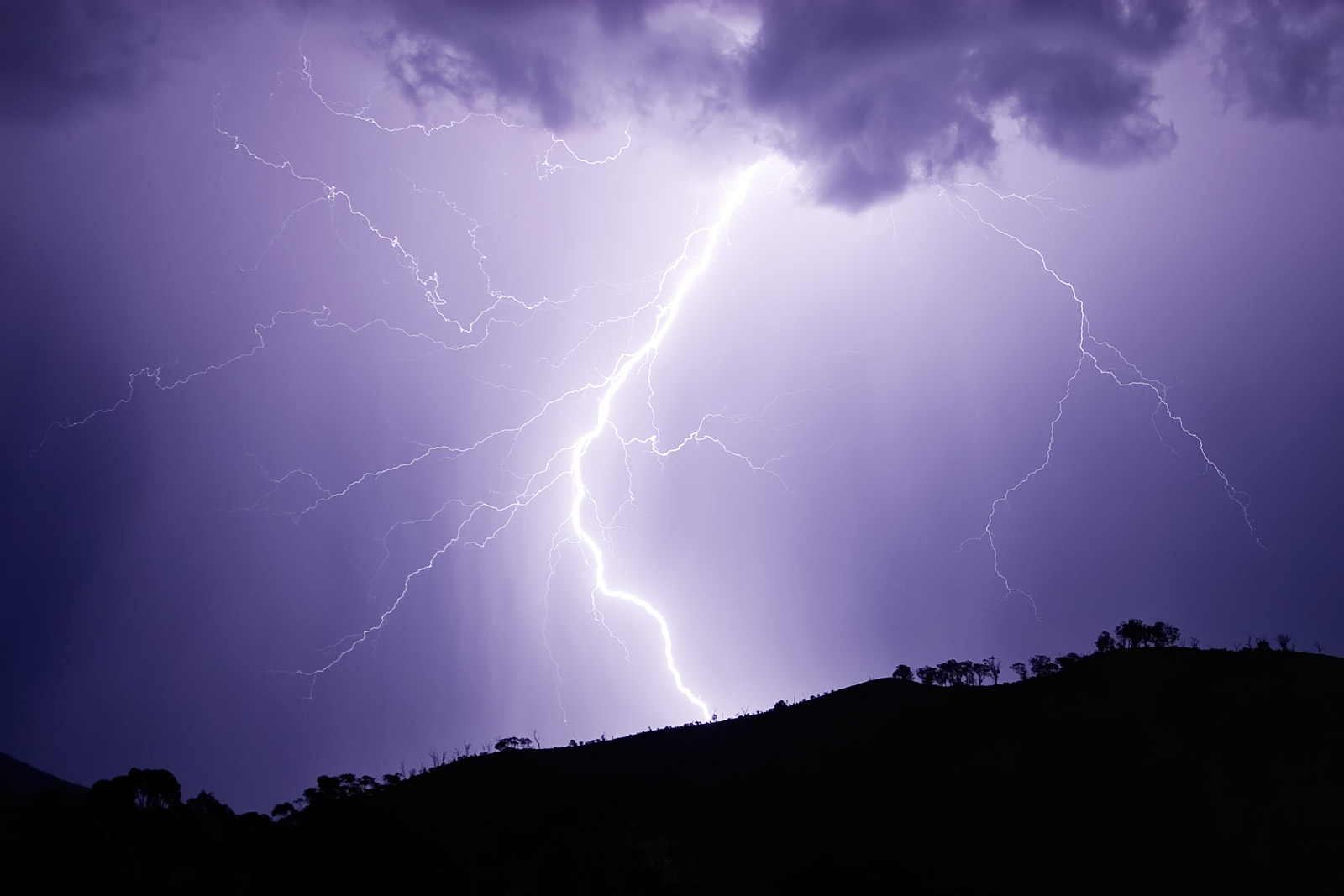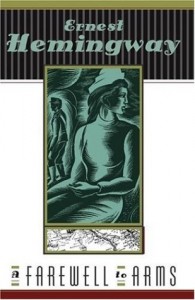 English 295/380. The Western Novel: On the Page and on the Screen
English 295/380. The Western Novel: On the Page and on the Screen
Spr 2013 4cr.
MWTrF 1:25-3:25 Tues 1-6
R. T. Smith
rodsmith@wlu.edu X8908
office hrs. 3:30-5:00 MWF
Students in The Western Novel will read the following seven novels of the American West and view films (Tuesday and Thursday afternoons) based on them: Wister’s The Virginian, Clark’s The Ox-Bow Incident, Leonard’s Hombre, Portis’s True Grit, Hansen’s The Assassination of Jesse James by the Coward Bob Ford, McMurtry’s Lonesome Dove (Part I) and Parker’s Appaloosa. After reminding ourselves of both the American westward expansion and early “frontier” texts by Cooper, Sedgwick, Crane, Twain, Harte and Zane Grey, we will begin to examine the literary record of western myths (complete with their politics and psychology) and their translations into film.
Topics of conversation will include structural and textual issues such as Romance and Reality, Convention and Invention/Type and Character, Social Darwinism, The Allure and Labor of the Margin, Landscape/ Inscape/Escape, Brotherhood of the Saddle, Hero and Antihero, Morality and Pattern, The American Adam, Myth-Making and Myth-Breaking, Ritual (Actual and Fantastic) and Law, Justice and Expediency. We will focus on the employment of literary and cinematic strategies of setting, language, narrative trajectory, character construction and political subtext. Each student will serve as facilitator of one in-class presentation/discussion focused on topics as varied as the impact of the Hayes Code on the laconic hero, the roles of women in Hombre, innocence and competence in True Grit, Centaurs: Horses and Men, modes of written communication within the western, impersonation and alias, hard law, humor in Lonesome Dove and collision of natural worlds and dream worlds. These discussions (approximately 20 minutes each) will involve handouts, questions for classmates and, possibly, brief audio or visual aids.
Each student will write 2 or 3 papers of approximately2000 words each and take a final exam.
Note: 1.Texts and films in this course have been selected to focus on issues other than the Indian Wars for 2 reasons: to maintain emphasis on majority intraracial dynamics and to minimize overlap with Professor Smout’s 2012 “Cowboys and Indians” course. 2. Messages and questions for students will regularly be posted on the Snopes blog at shenandoahliterary.org/blog.
Student Learning Objectives in English:
Students in English will learn how to
1. write clear, persuasive analytical essays driven by arguments about texts;
2. read closely, recognizing subtle and complex differences in language use;
3. seek out further knowledge about literary works, authors, and contexts, and document research appropriately, adhering to the highest standards of intellectual honesty;
4. broaden the range of literary texts and performances from which they can derive pleasure and edification.
In a FDR HL course, students
• acquire knowledge about the cultural and historical context of literature;
• learn to analyze various literary forms and complex and difficult language;
• learn to read with imagination; and
• respond critically to literature orally and in writing.
Course Requirements:
All elements must be completed to pass the course. Failure of a single assignment indicates weakness, but if the student passes the course, he or she has been judged competent by the professor in the four stated course objectives.
20% participation and attendance (includes discussion leader assignment, quizzes).
20% The Good the Bad and the Ugly: Heroic Type and Trope, 2000 words.
20% Violence: Catharsis or Confection, 2000 words.
20% Multi-source (for 380 credit) paper on Community and Justice in 2 novels, 2000 words. (200-level students may substitute a creative alternative.)
20% Final Exam: 40 objective questions and one essay chosen from a list of three topics. Failure of the examination with a grade of 59 or lower results in the E grade (conditional failure). See the regulations governing removal of E grades in the course catalog.
Required Primary Texts:
Walter Van Tilburg Clark, The Ox-Bow Incident (Modern Library, ISBN 978-0-8129-7258-0-50595)
Ron Hansen, The Assassination of Jesse James by the Coward Bob Ford (Harper, ISBN 978-0-06-112901-8)
Elmore Leonard, Hombre (HarperTorch, ISBN 0-380-82224-5)
Larry McMurtry, Lonesome Dove (Simon & Schuster, ISBN 978-1-4391-9526-0)
Robert B. Parker, Appaloosa (Berkeley, ISBN 978-0-425-23365-8)
Charles Portis, True Grit (Overlook, ISBN 978-1-59020-459-7)
Owen Wister, The Virginian (Barnes and Noble, ISBN 13:978-1-59308-236-9)
Recommended Supplementary Texts:
John Cawelti. The Six-Gun Mystique Sequel (U. of Wisconsin Press/Popular Press, ISBN 0-87972-786-1)
Zane Grey. Riders of the Purple Sage (Dover, ISBN 0-486-42456-1)
Required Films:
Appaloosa (2008) Directed by Ed Harris [Ed Harris, Vigo Mortensen, Jeremy Irons, Rene Zellweger]
Hombre (1967) Directed by Martin Ritt [Paul Newman, Richard Boone, Diane Cilento, Martin Balsam, Frederick March]
Lonesome Dove (1989) Directed by Simon Wincer [Robert Duvall, Tommy Lee Jones, Danny Glover, Diane Lane, Robert Urich]
The Assassination of Jesse James …. (2007) Directed by Andrew Dominick [Brad Pitt, Casey Affleck, Sam Shepard, Zooey Deschanel, Mary Louise Parker]
The Ox-Bow Incident (1942) directed by William Wellman [Henry Fonda, Harry Morgan, Anthony Quinn]
The Virginian (1946 ) Directed by Stuart Gilmore [Joel McRae, Brian Donleavy]
True Grit (1969) directed by Harry Hathaway [John Wayne, Kim Darby, Robert Duvall]
Reading and Discussion Schedule:
M (4/22) Wister, The Virginian
Tu Wister, The Virginian [workshop: Topic and Thesis, Needle and Needle’s Eye]
Screening, The Virginian
W Wister, The Virginian & Clark, The Ox-Bow Incident
Th Screening: The Ox-Bow Incident
F Clark, The Ox-Bow Incident [workshop: Plagiarism: Common Sense and Common Knowledge]
*
M Leonard, Hombre [workshop: Quotation: Incorporation and Attribution]
Tu Leonard, Hombre {paper # 1 due}
Screening: Hombre
W Portis, True Grit
TH Screening: True Grit
F Portis, True Grit
*
M Hansen, The Assassination of Jesse James… (Part 1)
Tu Hansen, The Assassination of Jesse James… (Part 2)
Screening: The Assassination of Jesse James …
W Hansen, The Assassination of Jesse James … (Part 3, Chpt. 6) {paper # 2 due for 380}
Th Screening: Lonesome Dove
F Hansen, The Assassination of Jesse James … (Part 3, Chpt. 7)
*
M McMurtry, Lonesome Dove
Tu McMurtry, Lonesome Dove {paper # 2 due for 295}
Screening: Lonesome Dove
W McMurtry, Lonesome Dove {paper #3 due for 380}
Th Screening: Appaloosa
F Parker, Appaloosa
Comprehensive Final Exam
Recommended Books:
Bold, Christine. Selling the Wild West: Popular Western Fiction 1860-1960
Cawelti, John. The Six-Gun Mystique Sequel.
Durham, Philip (Ed.). Seth Jones and Deadwood Dick on Deck.
Emmert, Scott D. Loaded Fictions: Social Critique in the Twentieth Century Western.
Fenin, George, and William K. Everson. The Western, From the Silents to the Seventies.
French, Philip. Westerns: Aspects of a Movie Genre.
Fussell, Edwin. Frontier: American Literature and the American West.
Halloway, John. Dime Novel Desperadoes.
Hamilton, Cynthia. Western and Hard-Boiled Detective Fiction in America: From High Noon to Midnight.
Klein, Marcus. Easterns, Westerns and Private Eyes: American Matters 1870-1900.
Limerick, Patricia. The Legacy of Conquest: The Unbroken Past of the American West.
Lyon, Thomas J., et. al. Western Literature Association. Updating the Literary West.
Mitchell, Lee Clark. Westerns: Making the Man in Fiction and Film.
Remington, Frederic. 173 Drawings and Illustrations.
Seagroves, Anne. Soiled Doves.
Slotkin, Richard. Gunfighter Nation: The Myth of the Frontier in Twentieth Century America.
Smith, Henry Nash. Virgin Land: The American West as Symbol and Myth.
Steckmesser, Kent Ladd. The Western Hero in History and Legend.
Stiles, T. J. Jesse James.
Thompkins, Jane. West of Everything: The Inner Life of Westerns.
Tuska, Jon. The Filming of the West.
Yeatman, Ted P. Frank and Jesse James
Suggested Further Novel Reading/Film Viewing
All the Pretty Horses
Blood Meridian
Dances with Wolves
Shena
Hondo
Jeremiah Johnson
Last Stand at Saber River
Little Big Man
The Missing
Monte Walsh
The Shootist
True Grit (Coen Brothers)
Policies and Procedures: House Rules
Lateness Policies: Please take paper deadlines seriously. Do not send me email attachments; submit papers on paper, in my box in Payne Hall (or Shenandoah office, depending upon where class meetings are held). I mark down (a full grade per day) for late work. Weekend days are real days. Keep a hard copy of every piece of work you hand in. Don’t trust the cloud, a hard drive, university drive, or jump drive as a backup. If I should misplace a paper, I will expect you to provide another copy of your essay upon request, without delay.
Reading quizzes will be instituted if I feel that discussions are not sufficiently lively or participatory.
Paper Format: Use MLA style. Please consult Joseph Gibaldi, MLA Handbook for Writers of Research Papers. Use normal (one inch) margins and true double-spacing throughout. No essay is complete without page numbers. Use your word-processor’s word count feature, or check one page and estimate the length of your paper. Too many words are scarcely better than too few.
Participation: Simply attending class does not guarantee a passing grade in participation. You must show up on time and actively participate in the discussion of the works. A person who never misses class, but seldom speaks, may fail the participation component of the course. If you have to be absent, submit a written comment on the reading ahead of time to secure participation credit. The participation part of the grade depends upon your active engagement. It is not calculated in points, but assessed holistically.
Attendance: Faithful attendance in class is required to pass the course. Absences can cause course failure even when you are passing other elements of the work in the course. Court dates, early flights or rides, and interviews constitute unexcused absences. Missed classes for athletic contests and practices are not automatically excused absences, as per the “Class Absence Policy and Procedure,” which states “Student-athletes are not automatically entitled to exemptions from class attendance.” See the instructor ahead of time if you know you must miss class: he can instruct you on a substitution for your participation. Given the compressed time frame of this academic term, an absence can precipitate a free fall. Documented illness or family tragedy excuses an absence, but the student needs to find out in detail what happened in the missed sessions.
Social Media: Cell phones should be turned off during class meetings. Laptops, which are welcome for purposes of note taking or quick search for answers to questions of information, should not be displaying or set to toggle to social media or shopping sites. Surreptitiously surfing or networking during class is an insult to your classmates and instructor.
Fine Dining: Students are welcome to bring water or other non-alcoholic drinks to class, but snacks should not be consumed during class time.
Make-up Screenings: Screenings are class meetings, but under emergency circumstances, it is possible to arrange to view DVDs in the library. The library has copies of the films the professor requires.
Final Exam: An objective and essay test, which will not be given early for any reason. Take this test seriously: if you fail it, you get an E in the course.
Pass/Fail? Not available.
Incompletes: Only in cases of extreme medical circumstances.
First paper (subject to negotiation)
The Good, the Bad and the Ugly: Heroic Type and Trope
The traditional western story involves a character who must encounter trials which measure his physical and moral courage, allowing the reader to see his behavior as heroic and his role as that of “the hero.” However, each author we study will have his own ideas about what constitutes heroism and how a hero must behave in order to become admirable to both the other characters in the book and the reader outside the book. This is a paper about how a general concept (in this case “the hero”) gets modified and modulated to suit the purposes of a particular narrative (in this case a specific novel). In some respects it is a definition essay which explores how an author creates his own meaning by associating the concept with particular terms, objects, metaphors and ritual actions and by the concept’s difference from conflicting terms, etc. By the time this essay is due, the class will have read and discussed three novels, each involving one or more major characters whose decisions and actions occur in the context of both physical and moral consequences, as well as danger to the focal character and those around him. Each student should select one “heroic” character, define the sense in which this character qualifies as hero and demonstrate how the author creates situations which become trials and other characters whose words and deeds confirm, amplify, dispute or otherwise shape this character’s opportunities to reveal his heroic traits. The characters in the book may have conflicting ideas about the nature of heroism, and both citations of text and summaries of episodes will constitute the evidence for the student writer to analyze. This is not an opinion paper designed to express the writer’s judgment of the actions of characters or motives of an author, but an analysis intended to explore and explain how a novel is shaped to promote a particular set of “heroic” words and actions with some attention given to the timing and structure of crucial episodes that weave together the plot sequence and the full revelation of the heroic character’s identity.
Second Paper (subject to negotiation)
Violence: Catharsis or Confection
The second written assignment will be to select and analyze keynote violent scenes in either True Grit or The Assassination of Jesse James by the Coward Bob Ford and to generate a paper discussing the rhetorical tactics and implied attitudes and their role in construction of the novel’s texture and themes. Students should employ the practice of close reading (handout) to identify and analyze the language of action, description and dialogue in terms of pace, degree of graphic depiction, figurative language and syntax, all in service of determining the consequences of this treatment of violence in the novel. An overriding question that should permeate the investigation is: To what degree is the violence contributing to the aesthetic sensibility of the narration, and to what degree is it conforming to formulas and clichés?
Third Paper
The final written assignment will be a multi-sourced paper focusing on the rituals and
Language of justice within the context and communities of two novels read in the course.
Internal Benchmarking Standards for Essays in English 380 Keen (based on Braunschneider)
Most students encounter a significant shift in grading standards when moving from 299 to 300-level English courses. The following guidelines are intended to clarify the significance of the letter grades used in this class. Writing literary analysis is an inescapable requirement of this HL English course.
keywords
unsuccessful F: This essay is unacceptable college work. It indicates a gross lack of preparation for the assignment. This grade also applies to a plagiarized essay.
weak, poor D: This essay resembles an unrevised draft. It does not clearly articulate or develop a focused thesis; it makes illogical, unsupported claims; the organization is confusing or obscures lines of logic. It may jump from topic to topic without apparent reason. The diction is likely to be repetitive and imprecise. There may be serious, distracting mechanical or grammatical errors.
fair, ok, adequate C: This essay has potential but falls short, struggling with one or more of the areas in which the B paper succeeds. It fulfills the assignment, staying on its topic, but does not offer a clear analysis of that topic. Its thesis may be clear but not focused or not debatable (too obvious). The argument may be vague, inconsistent, simplistic, or self-contradictory; ideas may be buried and the connections between them obscure. Paragraphs may be lacking development, and the organization may hinder effective development of the thesis. Transitions may be missing. This essay may contain several grammatical and mechanical errors or a pattern of error.
B-: pretty good
B: good B: This is a strong essay that demonstrates careful thought and planning. It fulfills the assignment well. It coherently argues a clearly stated, compelling thesis, offering sufficient supporting evidence and attending to the complexities of the object of analysis. Throughout the paper, the claims are insightful and well substantiated, and the diction is precise and thoughtful. Paragraphs are well developed, transitions clearly mark the direction of the argument, and the organization serves to elucidate the thesis. It contains few mechanical or grammatical errors.
B+: very good
excellent, superb A: This essay is outstanding, excelling in all of the areas in which the B paper succeeds. It successfully takes risks and pushes the bounds of its topic. The thesis is complex, focused, and insightful; the argument is persuasive and thoughtfully elaborated, using especially well-chosen evidence; and the writing style is lucid, engaging, and smooth. This essay contains very few mechanical errors and no ungrammatical sentences.
THIS SYLLABUS IS OUR MAP, AND WE MAY WANDER, BUT ONLY TO OUR BENEFIT. Stay tuned.





